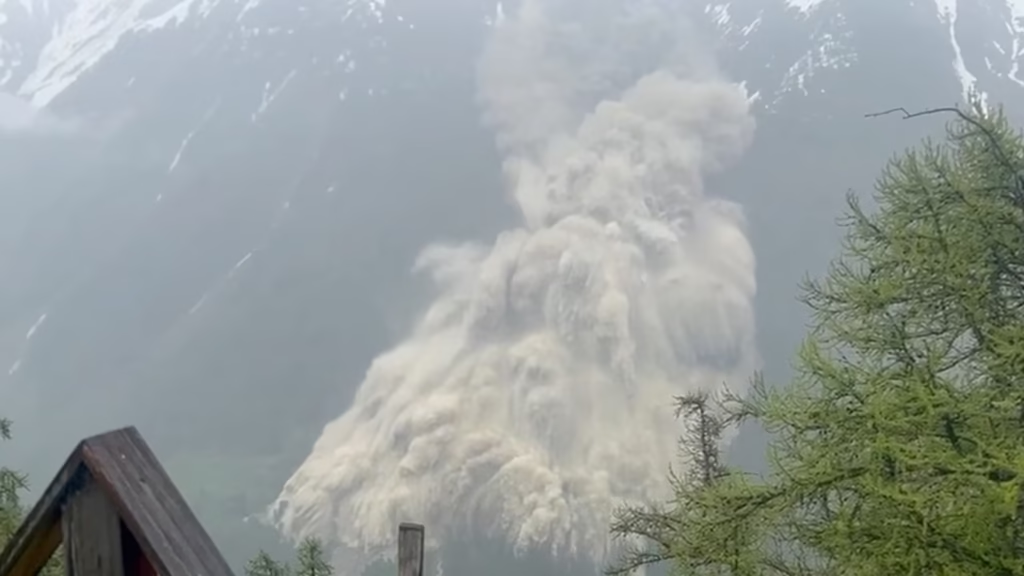
In a scene captured from a handout video, mud and debris surged down a mountainside following a partial glacier collapse, burying much of the Swiss village of Blatten on May 28, 2025. (Credit: REUTERS)
In a stark reminder of the accelerating impacts of climate change, the village of Blatten in Switzerland’s Lötschental Valley was devastated by a massive glacier collapse on May 28, 2025. The disaster, attributed to the destabilization of the Birch Glacier, has raised urgent concerns about the safety of alpine communities and the broader implications of glacial melt worldwide.
The Collapse: A Village Buried
The catastrophe unfolded when approximately 3 million cubic meters of ice and rock from the Birch Glacier broke loose, unleashing a torrent of debris that engulfed Blatten. The avalanche buried around 130 buildings, including the village church, effectively erasing 90% of the settlement. Seismic activity from the collapse was comparable to a magnitude 3.1 earthquake, underscoring the event’s severity.
Fortunately, due to earlier signs of instability, authorities had evacuated all 300 residents and livestock from Blatten by May 19. This preemptive action likely saved many lives, although one person remains missing.
Aftermath and Ongoing Risks
The massive debris field dammed the Lonza River, forming a large lake and posing a significant flood risk to downstream communities such as Gampel and Steg. While the river has begun to carve a path through the blockage, alleviating some immediate concerns, authorities caution that the situation remains precarious. The Swiss army is on standby to assist with potential evacuations or further interventions.
Climate Change: The Underlying Culprit
Experts link the glacier’s collapse to the broader trend of glacial retreat driven by global warming. The Alps have experienced a 50% reduction in glacier area since 1850, with projections indicating a potential complete loss by the end of the century. Melting permafrost destabilizes rock faces, increasing the likelihood of such catastrophic events.
A recent study highlighted that nearly 40% of the world’s glaciers are already committed to melting due to current levels of greenhouse gas emissions. This loss threatens not only local ecosystems and communities but also global sea levels and freshwater supplies.
Global Implications and Calls to Action
The disaster in Blatten serves as a grim illustration of the urgent need for comprehensive climate action. It underscores the importance of early warning systems, strategic relocation planning for at-risk populations, and international cooperation to mitigate the effects of climate change.
As the world observes the International Year of Glaciers’ Preservation, the events in Switzerland amplify the call for immediate and sustained efforts to reduce greenhouse gas emissions and protect vulnerable communities from the escalating threats posed by a warming planet.
For continued updates on this developing story and related environmental news, stay tuned to our coverage.